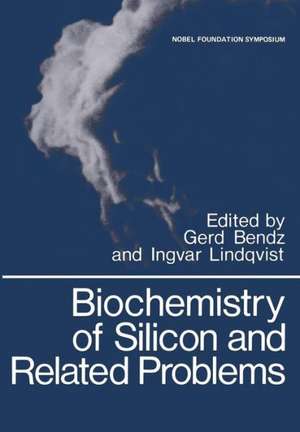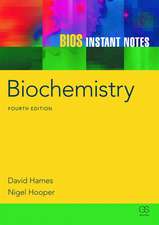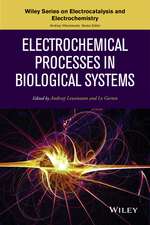Biochemistry of Silicon and Related Problems: Nobel Foundation Symposia, cartea 40
Editat de Gerd Bendzen Limba Engleză Paperback – 26 apr 2013
Preț: 659.53 lei
Preț vechi: 775.91 lei
-15% Nou
Puncte Express: 989
Preț estimativ în valută:
126.22€ • 130.39$ • 105.04£
126.22€ • 130.39$ • 105.04£
Carte tipărită la comandă
Livrare economică 25 martie-08 aprilie
Preluare comenzi: 021 569.72.76
Specificații
ISBN-13: 9781461340201
ISBN-10: 1461340209
Pagini: 604
Ilustrații: XI, 591 p.
Dimensiuni: 170 x 244 x 32 mm
Greutate: 0.95 kg
Ediția:Softcover reprint of the original 1st ed. 1978
Editura: Springer Us
Colecția Springer
Seria Nobel Foundation Symposia
Locul publicării:New York, NY, United States
ISBN-10: 1461340209
Pagini: 604
Ilustrații: XI, 591 p.
Dimensiuni: 170 x 244 x 32 mm
Greutate: 0.95 kg
Ediția:Softcover reprint of the original 1st ed. 1978
Editura: Springer Us
Colecția Springer
Seria Nobel Foundation Symposia
Locul publicării:New York, NY, United States
Public țintă
ResearchCuprins
General Chemistry of Silicon.- Aqueous Silicic Acid, Silicates and Silicate Complexes.- Hydrogen-Bonded Complexes of Silica with Organic Compounds.- The Silicon-Nitrogen Bond. A Short Survey.- Silicon in Soil, Plants and Microorganisms.- Effect of Interactions of Silicious Components and Organic Substances on Life in Soil — A Contribution to Plant Production.- Isolation and Characterization of a Silicon-Organic Complex from Plants.- Biodegradation of Silicon-Oxygen-Carbon- and Silicon-Carbon-Bonds by Bacteria — A Reflection on the Basic Mechanisms for the Biointegration of Silicon.- Regulation of Metabolism by Silicate in Diatoms.- Role of Silicon in Diatom Metabolism and Silicification.- Physiological Significance of Silicon Compounds in Animals and Man.- Significance and Functions of Silicon in Warm-Blooded Animals. Review and Outlook.- Essentiality and Function of Silicon.- Silicon Levels in Human Tissues.- Silicon, Endocrine Balance and Mineral Metabolism (Calcium and Magnesium).- The Physiological Role of Silicon and Its Anti-Atheromatous Action.- Isolation and Characterization of a Characteristic Phosphato-Silicate from Human Lungs with Silicosis.- Silicosis and Other Diseases Caused by Silicon Compounds.- Carcinogenic Potential of Silica Compounds.- Interactions of Silica and Asbestos with Macrophages.- Cellular Reactions with Silica.- Old-New Problems of Silicotic Fibrosis.- Biological and Pharmacological Effects of Organo-Silicon Compounds.- Biological Activity of Silatranes.- Biological Activity of Nitrogen-Containing Organosilicon Compounds.- Silica-Pharmaca.- The Pharmacology of Silanes and Siloxanes.- Biochemical Effects of 2, 6-cis-Diphenylhexamethyl-cyclotetrasiloxane in Man.- Structural and Analytical Aspects of Organosilicon Compounds.- StructuralAspects on Organosilicon Compounds.- Analysis of some Organosilicon Compounds in Biological Material.- Discussion and Summary.- Silicon in Biological Systems.- Final Discussion.- List of Participants.

















